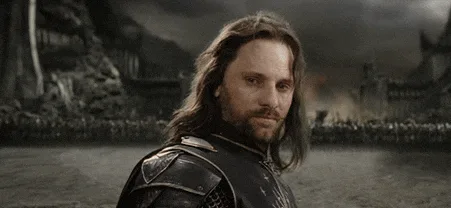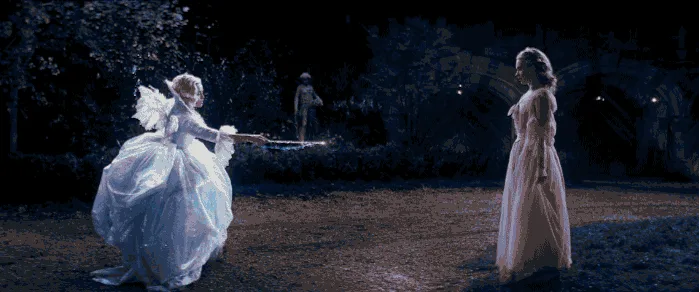41 Fantasy Subgenres: An Utterly Exhaustive List
Bella Rose Emmorey
book editor, rogue behaviorist, digital marketer, writer, brand builder, plant aunt, and cheese enthusiast.
Being one of the most popular book genres out there, it’s not surprising there are dozens of fantasy subgenres you’ll find yourself in. As the readership grows, so to do the types of fantasy available.
And in truth, what you’ll often find is that some fantasy subgenres mix and match within each other. Most books are not a single subgenre and contain many types of fantasy within it.
The interesting ones do, at least.
8 Fantasy Subgenres that Fit Any Category
You can mix and match any of the below types of fantasy into the other subgenres covered below.
Fantasy Romance (or $ Romantasy$ ): An equal mix of romance and fantasy in which both plots are primary. Meaning, they’re often related and the romance is not a subplot.
Cozy Fantasy: Low stakes fantasy subgenre where the conflicts usually center around non-sinister problems, with a setting that evokes comfort and warmth.
Young Adult (YA) Fantasy: Stories focusing on young protagonists battling coming-of-age themes, and most certainly not riddled with raunchy sex scenes (ACOTAR is not YA).
Military Fantasy: Fantasies that focus on warfare, military strategy, and battles, often set in epic or dark fantasy worlds with complex political dynamics.
Court Intrigue Fantasy: Now we can talk about ACOTAR, and other books that center around power dynamics, politics, and royal court life, including noble houses and typically involving an "outsider" character.
Shapeshifter Fantasy: The name says it all. If people shapeshift, it’ll belong in this subgenre, and can exist in many others, though you’ll find many in "paranormal".

Thriller Fantasy: Fast-paced, suspenseful fantasy stories that blend magical or supernatural elements with tension, danger, and high-stakes conflict. The key here is that it will maintain the thrill, and not ebb the way other fantasy subgenres do.
LGBTQ+ Fantasy: It shouldn’t need to have its own subgenre, because it should just be normal to include these types of characters, much like you don’t have a specific subgenre for "whiney friend" and yet most fantasy novels have this character type. That said, this fantasy subgenre literally only applies if there are characters who identify as LGBTQ+, particularly the main characters.
What is Urban Fantasy?
Urban fantasy is a subgenre of fantasy set in a contemporary, real-world urban environment where magical or supernatural elements exist alongside the everyday. It often includes mythical creatures, magic, and hidden societies operating within modern cities. Folks love it because they can imagine magic existing all around them.
7 Urban Fantasy Subgenres
Paranormal Romance: Romantic stories that involve one or more characters with supernatural abilities, like vampires, werewolves, or ghosts. You can also include shifters in that list, for a paranormal shifter romance, if you wish.
Supernatural Detective / Crime: Mysteries or crime stories where detectives or investigators solve cases involving supernatural elements, such as magic, ghosts, or mythical creatures.
Dark urban fantasy: A subgenre of urban fantasy that emphasizes darker, grittier themes, often featuring antiheroes, morally ambiguous characters, and a shadowy or dangerous urban setting. Think: seedy underbelly and heinous plots.
Mythic or Legendary: A fantasy subgenre that draws on ancient myths, legends, or folklore, often involving gods, heroes, and epic quests.
Post-Apocalyptic: Set in a world after a cataclysmic event, focusing on survival, rebuilding, and the remnants of civilization often with dystopian or fantastical elements.
Historical urban fantasy: This fantasy subgenre is set in a past historical period, blending the magical or supernatural with a real-world historical setting.
Urban fantasy horror: Horror and magic and set in our current world. That’s what this type of fantasy is.
What is High Fantasy?
High fantasy is a subgenre of fantasy set in an entirely fictional, often richly detailed world with its own rules, cultures, and history. It typically involves epic quests, battles between good and evil, and characters of noble lineage or extraordinary abilities. You’ll find grand themes of heroism, destiny, and power in this type of fantasy.
11 High Fantasy Subgenres
Epic Fantasy: Grand, sweeping narratives set intricate worlds, featuring large-scale conflicts, quests, and battles, usually involving the fate of entire civilizations or the balance between good and evil. Basically, they be epic stories in epic places.

Sword and Sorcery: This is an action-driven fantasy subgenre focused on heroes—often loners—who engage in personal quests and battles, typically emphasizing magic, combat, and thrilling escapades.
Heroic Fantasy: Stories centered around larger-than-life heroes who embark on dangerous journeys or face major challenges, often showcasing their bravery, strength, and moral integrity. Buncha goodie goods doing cool stuff and saving the world.
Mythic Fantasy: This type of fantasy draws heavily on mythology, folklore, and ancient legends, often featuring gods, mythical creatures, and archetypal heroes. This differs from the one in urban fantasy because they take place at the time of the myths.
Portal Fantasy: A subgenre where characters travel from the ordinary world into a new one through a magical portal that has magical beings, creatures, and more.
Chivalric Fantasy: Stories inspired by medieval ideals of chivalry, focusing on knights, honor, courtly love, and noble quests, often set in a romanticized version of the Middle Ages. Meaning, all the gross smells and lack of sewage systems are conveniently left out.
Quest Fantasy: There’s a very specific mission and question, and the character has to go on a journey to accomplish it. This can often be paired with epic fantasy, ie Lord of the Rings.
Political Fantasy: Fantasy centered around political intrigue, power struggles, and the maneuverings of rulers, nobles, and factions within a different world.
Gods and Demigods Fantasy: Stories that involve gods, demigods, or other divine beings as central characters. You’ll find a lot of retellings in this fantasy subgenre.
Medieval Fantasy: Fantasy set in a world inspired by the Middle Ages, featuring elements like castles, knights, feudal societies, and a blend of historical and fantastical elements. Similar to Chivalric Fantasy but featuring different characters and conflicts.
Religious Fantasy: Fantasy that explores themes of religion, spirituality, and divine intervention, often involving gods, prophets, or religious conflicts within a completely separate world from our own.
What is Low Fantasy?
Low fantasy is a subgenre of fantasy set in the real world or a world very similar to it, where magical elements are rare, subtle, or exist on the fringes of society.
Unlike high fantasy, which involves grand, epic narratives, low fantasy often focuses on personal, everyday struggles with supernatural occurrences intruding into a more realistic setting.
6 Low Fantasy Subgenres
Paranormal Fantasy: A subgenre of fantasy that involves supernatural elements like ghosts, vampires, or otherworldly entities.
Magical Realism: A literary style where magical or fantastical elements are subtly integrated into a realistic setting, often without questioning their existence, but aren’t always a centralized part of the plot.
Fairytale Fantasy: Fantasy stories that draw inspiration from classic fairy tales (including $ retellings$ ), featuring elements like enchanted forests, magical creatures, and moral lessons.

Historical Fantasy: Historical fiction, but with magic! Mostly historically factual settings and societies, with elements of magic sewn in.
Mystery Fantasy: A subgenre that combines elements of mystery and fantasy, where the protagonist solves a puzzle or uncovers secrets in a world where magic and the supernatural play a key role.
Cozy Fantasy: Like fairytale fantasy, this subgenre often takes place in a magical setting, but magic isn’t a huge part of the story. It’s low stakes, not much magic is used, and usually has a happy ending.
What is Dark Fantasy?
Dark fantasy is a subgenre of fantasy that blends elements of horror with the traditional fantasy setting, often emphasizing grim, sinister, or eerie atmospheres. Just killing off characters doesn’t make it "dark", FYI.
It typically features morally ambiguous characters, bleak worlds, and themes of death, fear, and the supernatural, creating a sense of dread or foreboding throughout the story.
9 Dark Fantasy Subgenres
Gothic Fantasy: This fantasy subgenre has gothic elements, featuring dark, mysterious settings, brooding atmospheres, and themes of decay, madness, and the supernatural.
Grimdark Fantasy: A type of fantasy characterized by its bleak, gritty tone, where morally gray characters face harsh realities in a brutal and unforgiving world.
Horror Fantasy: Stories that combine elements of horror with fantastical settings or creatures, creating a sense of fear and suspense within a magical or supernatural context.
Weird Fantasy: It’s, uh, weird. Okay? A subgenre that blends fantasy with bizarre, surreal, or otherworldly elements, often challenging conventional notions of reality and logic.
Supernatural Horror Fantasy: Fantasy that incorporates supernatural beings or phenomena into horror-driven narratives, emphasizing fear and the unknown within a fantastical framework.
Psychological Fantasy: A fantasy subgenre that messes with the mind, often merging reality and fantasy to delve into psychological themes like identity, perception, and madness.
Occult Fantasy: Stories centered around occult practices, secret societies, and hidden knowledge. It usually involves dark magic, rituals, and mystical artifacts. Hello, Jennifer’s Body.
Vampire Fantasy: If there are vampires, it gets a subgenre of its own because of how popular these stories are. Specifically, if it's in dark fantasy, it’s a bit more depressy, and vampires do not sparkle. Instead, they blow up in the sun.

Tragic Fantasy: Fantasy tales that emphasize sorrowful, melancholic themes, often featuring doomed heroes, tragic fates, and bittersweet endings.
If there’s one thing you’ve learned about fantasy subgenres, it’s that you have an audience for basically anything you want to write involving magic or mystical creatures.
Like what you're reading?
Join other authors like you in NovelPad’s free writing community!
Join the communitySimilar Posts
What File Formats are Accepted by Kindle Direct Publishing?
File types for ebooks, paperbacks, and hardbacks on Amazon's KDP.
Ollie Ander
Is probably just a couple cats in a trench-coat—the hair shedding and sunlight napping are highly suspect.
How long is a fantasy book? Words, pages, chapters, scenes, & prologues
What should wordcount goals look like for a fantasy novel?
S.R. Beaston
Crafty with words, wit, and wisdom, just add caffeine to make it more interesting.
The Writer’s Resolution Guide 2024
Goal ideas and strategies for your new writing year.
Sage Kay
Writer, reader, outfit repeater.
What is a NovelPad Scene Card? | Organizing Your Novel
S.R. Beaston
Crafty with words, wit, and wisdom, just add caffeine to make it more interesting.
How long is a Science Fiction Book?
How many words, chapters, and pages should be in your sci-fi novel?
Ollie Ander
Is probably just a couple cats in a trench-coat—the hair shedding and sunlight napping are highly suspect.
What is Write-to-Market? An Author's Fast-Track to Earnings
Writing to market is one of the most successful sale strategies for self-published authors. Here's how.
Bella Rose Emmorey
book editor, rogue behaviorist, digital marketer, writer, brand builder, plant aunt, and cheese enthusiast.